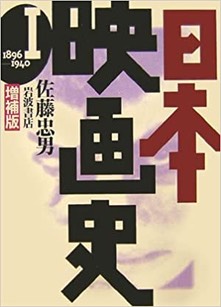
I opened up Facebook on the morning of March 21 and was sad to a post by Ishizaka Kenji, a professor at the Japan Institute of the Moving Image and a coordinator at the Tokyo International Film Festival. The announcement stated that Sato Tadao 佐藤忠男 had died on March 17, 2022. The Japan Institute of the Moving Image eventually put out an official announcement on its home page, since Sato was both Professor Emeritus and former president of the Institute.
Sato was one of the greatest and most influential film critics and scholars in Japan. He was always a bit different from other critics and academics, in part because he never went to college. As he always said, cinema to him was his school. He was born in 1930, and his real name is Iiri Tadao. While working at various jobs, including at the national rail company and an electronics factory, he began writing film reviews and got involved at Shiso no kagaku, an intellectual association led by Tsurumi Shunsuke, which helped define his life-long focus on the popular dimensions of modern entertainment. Working as an editor at Eiga hyoron and other publications, Sato became an extremely prolific writer, publishing over a hundred books on topics not just related to film, but also including manga, education, theater, democracy, war, literature, etc. He also wrote books for younger readers. With his wife, Sato Hisako, who was a strong presence in his work, he founded the film historiographical journal Eigashi kenkyu in 1973, and as a historian, eventually published a monumental four volume history of Japanese film (cover above). As an educator, he began teaching at Imamura Shohei’s film school, which later became the Japan Institute of the Moving Image. Sato eventually became president of that institution. He actively engaged with foreign cinema and critics, attending film festivals and conferences around the world, and serving as director of the Focus on Asia film festival in Fukuoka, helping introduce other Asian cinemas to Japan. He received numerous awards, including the Person of Cultural Merit from the Japanese government in 2019. He is the Japanese film critic who has arguably been translated the most into English, with Currents in Japanese Cinema (1982) and Kenji Mizoguchi and the Art of Japanese Cinema (2011) being two book-length translations.
Sato-sensei provided one of my primary introductions to Japanese cinema, especially in Japanese. When I first spent a summer in Japan, I wrote to him (perhaps my first formal letter in Japanese!), asking him to recommend books on cinema for the University of Iowa library. I got to meet him that summer at a silent film screening at Kinokuniya where Sawato Midori was performing. The first book I read in full in Japanese was his Nihon eiga to Nihon bunka (1987), which I read in fourth-year Japanese when the instructor decided to work with us individually to help us read books of our choice. I later became a colleague of Sato-sensei’s, as we both ended up serving on the board and on various committees at the Japan Society of Image Arts and Sciences. In recent years, his book Nihon eiga rironshi—the only historical introduction to Japanese film theory in Japanese—has been central to my research on Japanese film theory (even if I can be critical of its stance), and I made sure to include a translation of the book’s introduction in a special journal issue I did on Japanese film theory.
Sato-sensei was always thrilled that I was using that book, since apparently it was a book few read, but one he thought was important. I also recorded an interview with him about a decade ago on Japanese film theory, which, now that he has passed, I should return to. I remember it was quite excellent.
There is much more to say, especially in terms of a critical appraisal of his work. He pursued a unique stance throughout his career, skillfully keeping distance from many of the major trends in Japanese film criticism from the 60s to the 90s, while still maintaining a left-wing commitment to a cinema of the people. His influence on Japanese film studies is truly immense.

